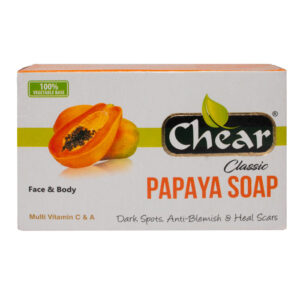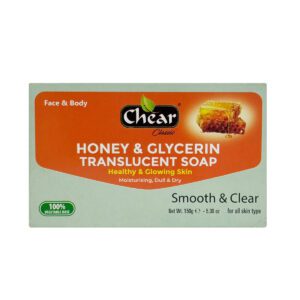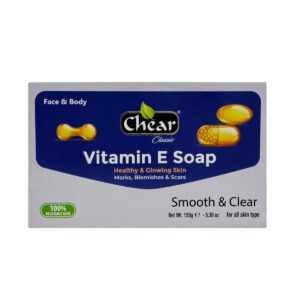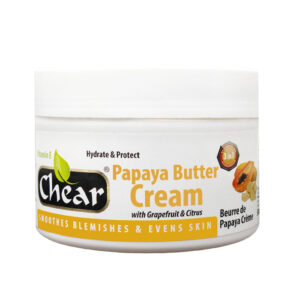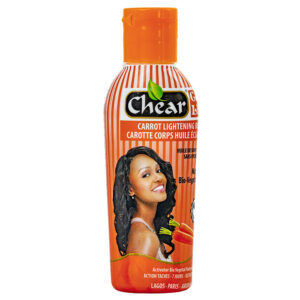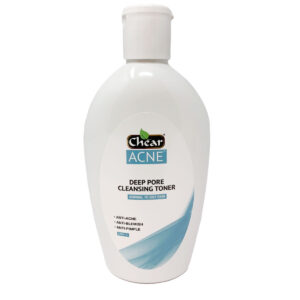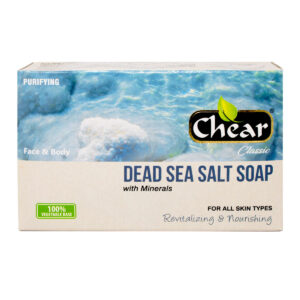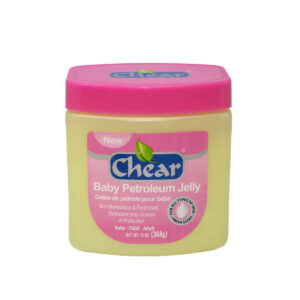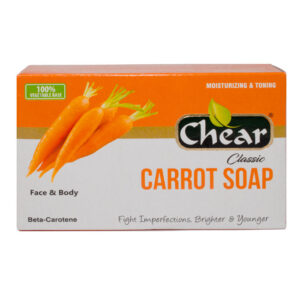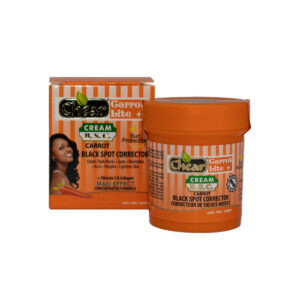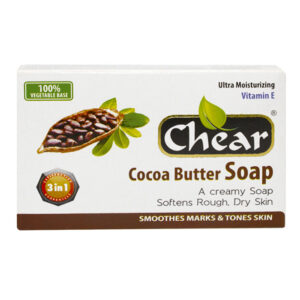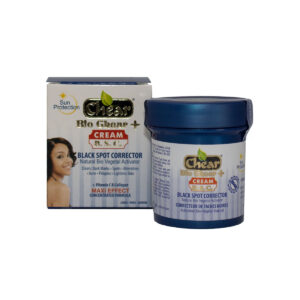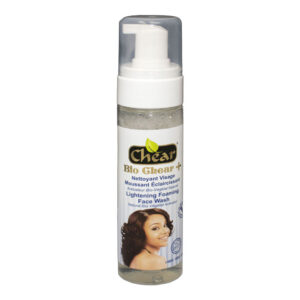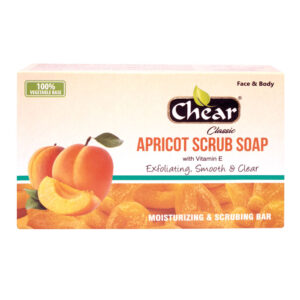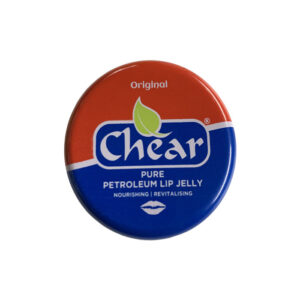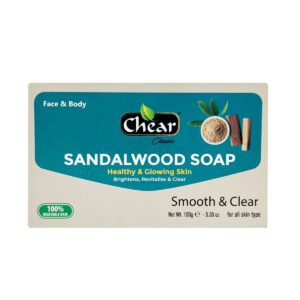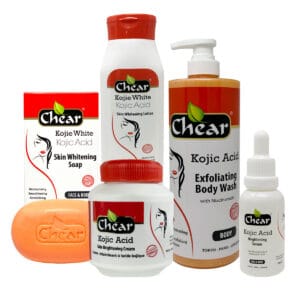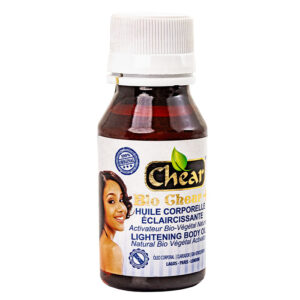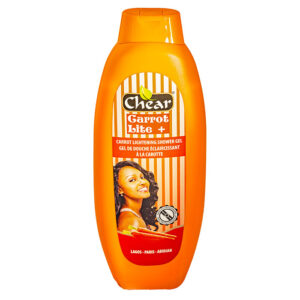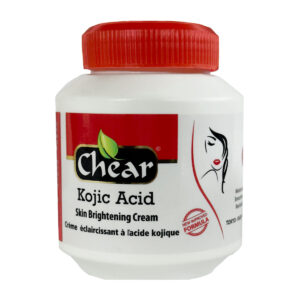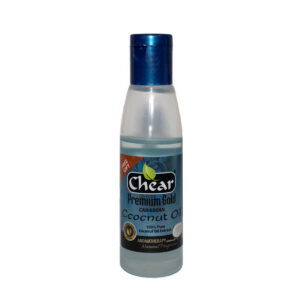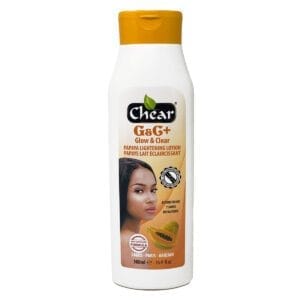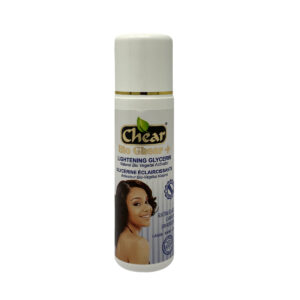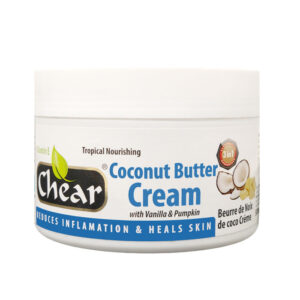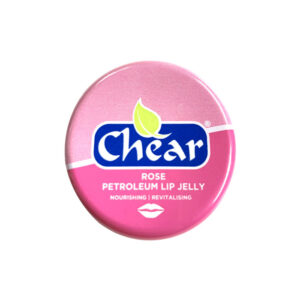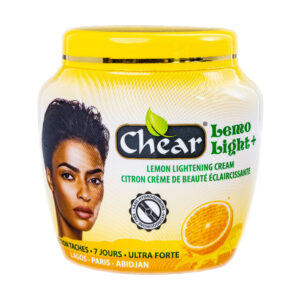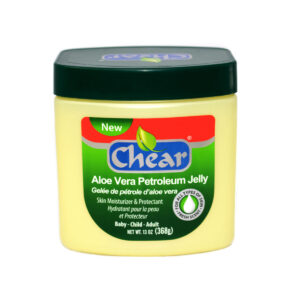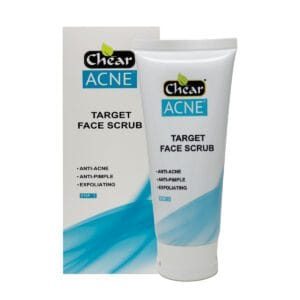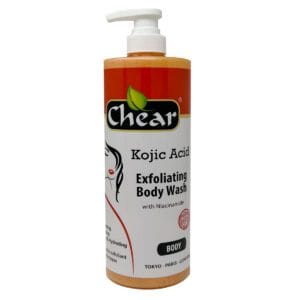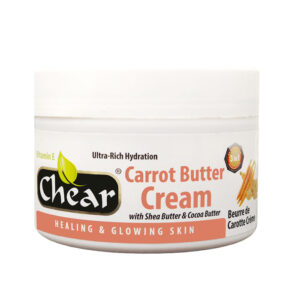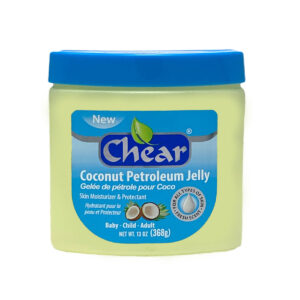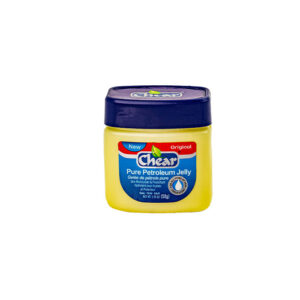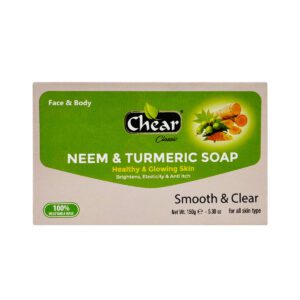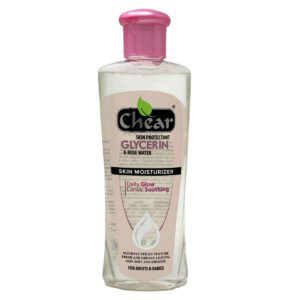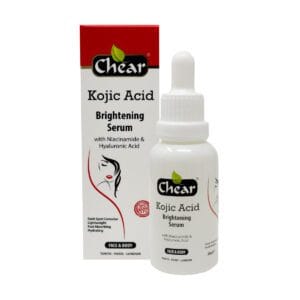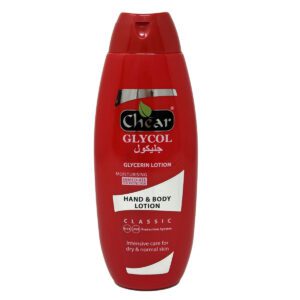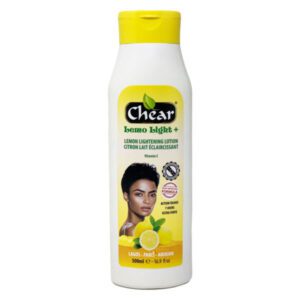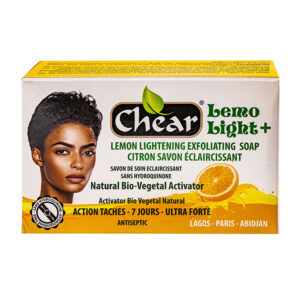- Home
- Beauty Tips
- Exfoliating Acne Prone Skin Safety
Exfoliating Acne Prone Skin Safety
Salicylic Acid Benefits, and Chear Acne Products
Learn about exfoliating acne-prone skin safely, the role of salicylic acid in skincare, its benefits beyond exfoliation, and effective Chear Acne products like the Target Face Scrub and Exfoliating Cleansing Pads. Backed by research from the NHS, medical journals, and cosmetic reviews for informed skincare choices.
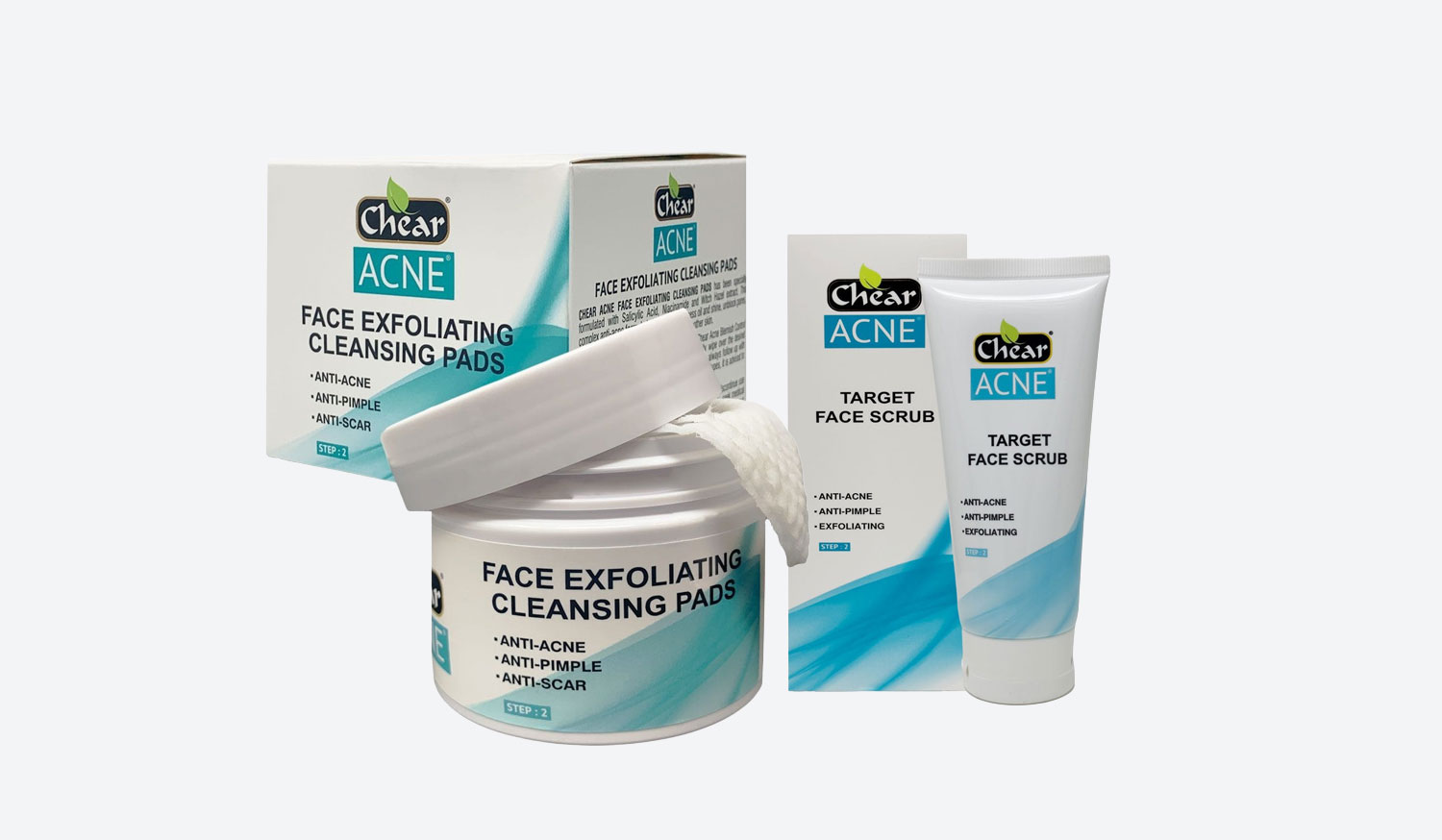
Acne is a common skin concern that affects millions, often leading to frustration and a quest for practical solutions. If you’re dealing with facial acne, you may wonder whether exfoliating your skin is a good idea or if it could aggravate the condition. Exfoliation, the process of removing dead skin cells from the surface, can be a double-edged sword. Done right, it promotes clearer pores and smoother texture; however, improper methods might irritate already sensitive skin. In this research-backed blog, we’ll delve into exfoliating acne-prone skin, exploring its safety, the science behind salicylic acid as a key ingredient, and how products from Chear Acne can fit into your routine. Drawing on trusted sources such as medical journals, the NHS, and cosmetic safety reviews, we’ll provide balanced insights to help you make informed decisions. Additionally, we’ll highlight practical product recommendations to address your acne concerns effectively.
Acne develops when pores become clogged with oil, dead skin cells, and bacteria, leading to inflammation. Exfoliation aims to tackle that buildup, but not all methods are created equal. For instance, chemical exfoliants like salicylic acid are often preferred over physical scrubs for acne-prone skin because they penetrate deeper without harsh rubbing. But is this approach safe? Let’s break it down step by step.
Should You Exfoliate If You Have Acne on Your Face?
If you have facial acne, exfoliating can be beneficial, but it depends on the type and severity of your acne. Mild acne, characterised by blackheads, whiteheads, and occasional spots, often responds well to gentle exfoliation. This process helps prevent the accumulation of dead skin cells that can mix with sebum and block pores, exacerbating breakouts. According to dermatological insights, exfoliating acne-prone skin can reduce clogged pores by promoting cell turnover.
However, for inflammatory acne characterised by red, swollen pimples or cysts, aggressive exfoliation may exacerbate the condition. Physical exfoliation, such as using grainy scrubs, can cause micro-tears in the skin, leading to more inflammation and potential scarring. Instead, experts recommend starting slow with chemical exfoliants that dissolve dead cells without friction. For example, topical treatments that encourage gentle shedding can improve skin texture over time without immediate irritation.
In a practical sense, if your acne is non-inflammatory, like those stubborn blackheads, incorporating exfoliation a few times a week could yield positive results. But patch test new products and monitor your skin’s response. If irritation occurs, reduce the use or consult a dermatologist. Combining exfoliation with moisturisation is crucial for maintaining the skin barrier, which is often compromised in individuals with acne-prone skin.
Research supports this cautious approach. Studies indicate that controlled exfoliation can enhance the efficacy of acne treatments by allowing better penetration of active ingredients. For those with persistent acne, professional advice from sources like the NHS emphasises starting with over-the-counter options before escalating to prescriptions.
Is It Safe to Exfoliate Acne-Prone Skin?
Yes, exfoliating acne-prone skin can be safe when done correctly, but it’s not without risks. The key is choosing the correct type of exfoliant and frequency to avoid over-stripping the skin, which can lead to increased oil production and more breakouts, a phenomenon known as the rebound effect. Chemical exfoliation is generally safer for acne-prone skin than physical methods because it uses acids to break down bonds between dead cells, allowing them to slough off naturally.
That said, safety varies from individual to individual. Individuals with sensitive or dry acne-prone skin may experience redness, stinging, or peeling if the exfoliants are too harsh. For instance, over-exfoliation can disrupt the skin’s natural pH balance and microbiome, potentially worsening acne. Medical reviews indicate that physical exfoliants, which require manual rubbing, may irritate inflammatory lesions, thereby making acne appear more severe. On the other hand, gentle chemical options can be incorporated safely, especially for individuals with oily or combination skin types.
To ensure safety, follow these guidelines: Start with low concentrations, exfoliate 1-3 times per week, and always follow with a non-comedogenic moisturiser and sunscreen, as exfoliation increases sun sensitivity. Avoid exfoliating overactive breakouts or open wounds to prevent infection. If you have severe acne, the NHS advises consulting a GP, as prescription treatments such as retinoids (which have exfoliating properties) may be necessary. Still, they come with warnings about potential irritation.
From a multi-angle perspective, dermatologists view exfoliation as a supportive step in acne management, not a standalone cure. It’s most effective when part of a regimen that includes cleansing, treating, and protecting the skin. Additionally, user experiences in medical literature indicate that consistent, gentle exfoliation can lead to fewer comedones (small bumps) over time; however, patience is essential, as results may take 4-6 weeks. If done improperly, however, it could lead to post-inflammatory hyperpigmentation, especially in darker skin tones.
What Is Salicylic Acid?
Salicylic acid is a beta-hydroxy acid (BHA) derived from willow bark, known scientifically as 2-hydroxybenzoic acid. It’s a lipophilic compound, meaning it’s oil-soluble, which allows it to penetrate pores effectively. In skincare, it’s synthesised for consistency and used in various concentrations for its exfoliating and anti-inflammatory properties.
Chemically, salicylic acid works by softening keratin, the protein that holds skin cells together, facilitating the shedding of dead cells. It’s structurally similar to aspirin (acetylsalicylic acid) but tailored for topical use. According to cosmetic databases, it’s commonly found in acne treatments at concentrations of 0.1-2% for over-the-counter products.
In the context of exfoliating acne-prone skin, salicylic acid stands out because it not only exfoliates the surface but also clears out pore-clogging debris. It’s regulated as a cosmetic ingredient in the EU and the US, with safety assessments confirming its use when formulated properly to avoid irritation. However, it’s not recommended for children under three or in high concentrations without guidance.
Is Salicylic Acid Good for Exfoliating the Skin?
Absolutely, salicylic acid is excellent for exfoliating the skin, particularly for those with acne-prone skin. As a BHA, it exfoliates by dissolving the “glue” that binds dead skin cells, promoting turnover without the abrasiveness of physical scrubs. This makes it ideal for unclogging pores and reducing the appearance of blackheads and whiteheads.
Studies from medical journals demonstrate its efficacy in chemical peels for acne, where it acts as a comedolytic agent, breaking down comedones (small bumps). Combined with home care, it enhances acne management strategies. Plus, it’s gentler on sensitive skin compared to alpha-hydroxy acids (AHAs), such as glycolic acid, as it causes less surface irritation while targeting deeper layers.
For exfoliating acne-prone skin, salicylic acid’s oil-solubility enables it to penetrate sebum, making it more effective than water-soluble exfoliants. Research shows it improves acne in regimens, with visible reductions in lesions after consistent use. However, start with lower doses to build tolerance, and pair with hydration to mitigate dryness.
From another angle, salicylic acid outperforms some alternatives in tolerability for daily use, especially in over-the-counter products. It’s a staple in acne protocols, often recommended by dermatologists for its dual exfoliating and anti-bacterial effects.
Other Benefits of Using Products That Contain Salicylic Acid
Beyond exfoliation, salicylic acid offers multiple benefits in skincare. It has anti-inflammatory properties, reducing redness and swelling associated with acne pimples. This makes it valuable for calming active breakouts while preventing new ones.
Additionally, it regulates sebum production, helping control oiliness that contributes to acne. Medical reviews highlight its role in treating not only acne but also conditions such as psoriasis and warts, due to its keratolytic action. In combination therapies, it enhances the effectiveness of other ingredients, such as those found in peels with glycolic acid.
Other perks include improving skin texture, fading post-acne marks through cell renewal, and even providing mild pain relief for inflamed spots, akin to its aspirin relative. Safety data from cosmetic reviews confirm its broad utility when used as directed, with a low potential for irritation in formulated products. For long-term use, it can maintain clearer skin, but always watch for signs of over-drying.
Chear Acne Products for Exfoliating Acne-Prone Skin
When it comes to practical solutions for exfoliating acne-prone skin, Chear Acne offers targeted products that incorporate effective ingredients, such as salicylic acid. These are designed to address acne while providing gentle exfoliation, making them standout options in the market.
First, the Chear Acne Target Face Scrub is a dual-action product that exfoliates and fights acne-causing bacteria. It contains salicylic acid to unblock pores and reduce oil, leaving skin clean and radiant. To use, apply a small amount to damp skin, massage gently in circular motions, and rinse thoroughly. It’s ideal for use 2-3 times a week, avoiding over-exfoliation. What sets it apart from competitors is its focus on bacterial control, alongside exfoliation, which reduces the risk of new breakouts more effectively than basic scrubs.
Next, the Chear Acne Face Exfoliating Cleansing Pads provide a convenient, no-rinse option for daily exfoliation. These pads gently wipe away dirt, excess oil, and dead cells while unclogging pores, making them perfect for on-the-go routines. Swipe one pad over your face after cleansing, focusing on acne-prone areas, and let it air dry. Their exfoliating action is milder, making them suitable for sensitive skin, and they outperform generic wipes by targeting acne specifically.
Unlike harsher products that might strip the skin, Chear balances exfoliation with skin health, aligning with research on safe acne care. For best results, incorporate the scrub for deeper cleanses and use pads for maintenance, always following with a moisturiser.
Final thoughts: Empowering Your Skincare Journey
Exfoliating acne-prone skin can transform your routine when approached thoughtfully. Salicylic acid emerges as a hero ingredient, offering safe exfoliation, pore-clearing benefits, and additional benefits such as reducing inflammation. Products like Chear Acne’s Target Face Scrub and Exfoliating Cleansing Pads provide accessible ways to implement these insights, standing out for their targeted efficacy.
Remember, consistency and gentleness are key, start slow, listen to your skin, and seek professional advice if needed. By integrating these evidence-based strategies, you can achieve clearer, healthier skin. If you’re ready to try, explore Chear products for a practical start.
For more personalised guidance, consider consulting a dermatologist.
References
- NHS UK: Acne Treatment Guidelines – https://www.nhs.uk/conditions/acne/treatment/
- British Medical Journal (BMJ): Acne Management Reviews – https://www.bmj.com/content/354/bmj.i6748
- National Institute for Health and Care Excellence (NICE): Skincare and Acne Advice – https://cks.nice.org.uk/topics/acne-vulgaris/
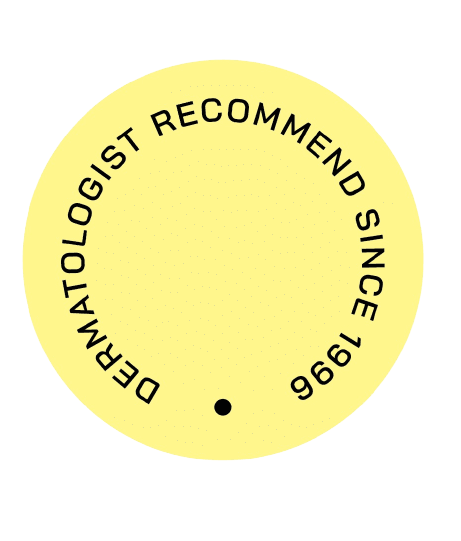
Chear Beauty @ Sonik Products Ltd | Company No: 3184821
Chear Beauty @ Sonik Products Ltd, Block C, Woodside End, Wembley Alperton, Middlesex HA0 1UR

